|
Books Should Be Free Loyal Books Free Public Domain Audiobooks & eBook Downloads |
|
|
Books Should Be Free Loyal Books Free Public Domain Audiobooks & eBook Downloads |
|
Fiction |
|---|
|
Book type:
Sort by:
View by:
|
By: Charles Alexander Eastman (1858-1939) | |
|---|---|
 Indian Child Life
Indian Child Life
The author was raised as an American Indian and describes what it was like to be an Indian boy (the first 7 chapters) and an Indian Girl (the last 7 chapters). This is very different from the slanted way the white man tried to picture them as 'savages' and 'brutes.'Quote: Dear Children:—You will like to know that the man who wrote these true stories is himself one of the people he describes so pleasantly and so lovingly for you. He hopes that when you have finished this book, the Indians will seem to you very real and very friendly... | |
By: Charles B. Cory (1857-1921) | |
|---|---|
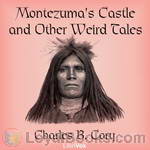 Montezuma's Castle and Other Weird Tales
Montezuma's Castle and Other Weird Tales
This is a collection of weird tales inspired from the natural history expeditions of the author, an independently wealthy bird collector, Olympic golfer, writer of many books on birds of the world, and, as evidenced in these pages, a fine storyteller to boot. | |
By: Charles Brockden Brown | |
|---|---|
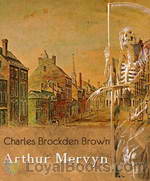 Arthur Mervyn
Arthur Mervyn
Kicked out of his parental home by his scheming young stepmother, a young country boy, Arthur Mervyn arrives in Philadelphia. Here he finds the city in the throes of a deadly yellow-fever epidemic. However, he finds a small job as a clerk and is determined to make his way in the world. He soon discovers that his employer is a con man and a murderer. One night, Arthur helps him dispose of a body in the river. While they're struggling with the corpse, the employer is swept away by the current... If you haven't encountered American Gothic before, Arthur Mervyn by Charles Brockden Brown is a great introduction to this genre... | |
By: Charles Clark Munn (1848-1917) | |
|---|---|
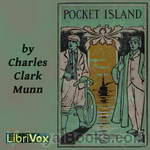 Pocket Island
Pocket Island
Along the coast of Maine are littered thousands of small islands. One such, named 'Pocket Island' by the locals was so called because of a pocket formed twice daily by the waning of the tides. The coast of Maine holds many secrets and legends, and Pocket Island was no exception. Subtitled "A Story of Country Life in New England", this story holds such varied and fascinating glimpses into the lives of a few individuals, and is not limited to merely a story of ghosts, of war, of barn dances, friendship, tales of rum-runners, smugglers, and seafarers... | |
By: Charles Dickens | |
|---|---|
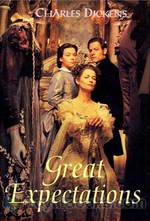 Great Expectations
Great Expectations
From the opening passage itself of Great Expectations by Charles Dickens, the reader is drawn into the world of the hero, Pip, who is at that time, seven years old. The author creates an unforgettable atmosphere: the gloom of the graveyard, the melancholy of the orphan boy, the mists rising over the marshes and the terrifying appearance of an escaped convict in chains. Told in first person (one of the only two books that Dickens used this form for, the other being David Copperfield) Great Expectations is a classic coming of age novel, in which we trace the growth and evolution of Pip or Philip Pirrip to give his full name... | |
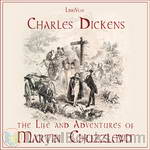 The Life and Adventures of Martin Chuzzlewit
The Life and Adventures of Martin Chuzzlewit
Dickens thought it was “in a hundred points, immeasurably the best” of his stories. Yet it was also one of his greatest flops. Compared to his other novels, The Life and Adventures of Martin Chuzzlewit was a dismal failure in terms of sales and the main reason for Dickens falling out with his long term publisher Chapman & Hall. They invoked a penalty clause and demanded that he pay back a portion of the advance which he refused. Martin Chuzzlewit was also dimly received in Dickens friendly America... | |
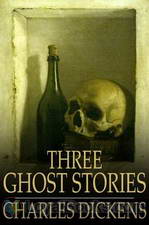 Three Ghost Stories
Three Ghost Stories
As a gifted writer with a strong interest in supernatural phenomena, Charles Dickens produced a string of ghost stories with enduring charm. Three of them are presented here, of which The Signal Man is one of the best known. Though quite different from his most celebrated realistic and humorous critical novels, these ghost stories, Gothic and grotesque as they are, are of good portrayal, and worth a read/listen. Summary by Vivian Chan | |
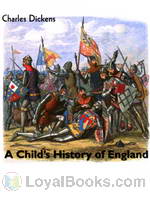 A Child's History of England
A Child's History of England
A Child’s History of England first appeared in serial form, running from January 25, 1851 to December 10, 1853 and was first published in three volume book form in 1852, 1853, and 1854. Dickens dedicated the book to “My own dear children, whom I hope it may help, bye and bye, to read with interest larger and better books on the same subject”. The history covered the period between 50 BC and 1689, ending with a chapter summarising events from then until the ascension of Queen Victoria. | |
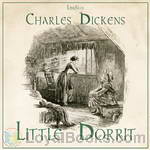 Little Dorrit
Little Dorrit
Originally published in monthly installments between 1855 and 1857, the novel focuses on the various forms of imprisonment, both physical and psychological, while also concentrating on dysfunctional family ties. Accordingly, Dickens avidly criticizes the social deficiencies of the time including injustice, social hypocrisy, the austerity of the Marshalsea debtors’ prison, and bureaucratic inefficiency. The novel kicks off with the introduction of William Dorrit, the oldest prisoner in the Marshalsea prison, who is also referred to as The Father of the Marshalsea... | |
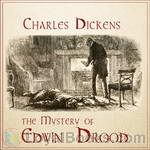 The Mystery of Edwin Drood
The Mystery of Edwin Drood
The Mystery of Edwin Drood is the final novel by Charles Dickens. It is a mystery indeed; the serial novel was just half completed at the time of Dickens’ death – leading to much speculation how it might have ended.The novel is named after Edwin Drood, one of the characters, but it mostly tells the story of his uncle, a choirmaster named John Jasper, who is in love with his pupil, Rosa Bud. Miss Bud is Drood’s fiancée, and has also caught the eye of the high-spirited and hot-tempered Neville Landless! Landless comes from Ceylon with his twin sister, Helena... | |
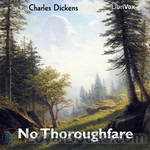 No Thoroughfare
No Thoroughfare
Two boys from the Foundling Hospital are given the same name, with disastrous consequences in adulthood. Two associates, wishing to right the wrong, are commissioned to find a missing heir. Their quest takes them from fungous wine cellars in the City of London to the sunshine of the Mediterranean — across the Alps in winter. Danger and treachery would prevail were it not for the courage of the heroine and the faithful company servant. The story contains crafted descriptions, well-drawn and diverse... | |
 A House to Let
A House to Let
A House to Let is a novella originally published in 1858 in the Christmas edition of Dickens’ Household Words magazine. Each of the contributors wrote a chapter (stories within a story, and in the case of Adelaide Anne Procter, as a story in verse) and the whole was edited by Dickens. The plot concerns an elderly woman, Sophonisba, who notices signs of life in a supposedly empty dilapidated house (the eponymous “House to Let”) opposite her own, and employs the efforts of an elderly admirer, Jabez Jarber, and her servant, Trottle, to discover what is happening within. | |
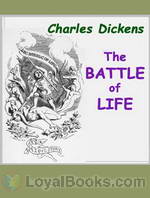 The Battle of Life
The Battle of Life
While "The Battle of Life" is one of Charles Dickens' Christmas Books - his annual release of a story just before Christmas - this one breaks the tradition by not being concerned with Christmas. Rather, its subtitle, "A Love Story", reveals more of the plot. The major events of this book take place on land that once was a battleground. That is just a backdrop for Dickens' idea of the real battle of life - finding and winning the right partner, so that life will go on to the next generation. The family that lives there is rather confused in its affections and intentions regarding who should end up with whom... | |
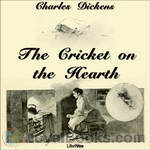 The Cricket on the Hearth
The Cricket on the Hearth
The tale of John Peerybingle, the good-hearted carrier, and his young wife Mary ('Dot'), interwoven with the story of poor toymaker Caleb Plummer, his beloved blind daughter Bertha, and the harsh old toy merchant Tackleton, who is due to marry May Fielding, a childhood friend of Dot. Comic relief is provided by Tilly Slowboy, the disaster-prone nursemaid of John and Dot's baby, and Boxer, the family dog.The cricket who chirps on the family hearth assumes fairy form to save the day when disaster looms in the form of a mysterious stranger... | |
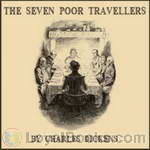 The Seven Poor Travellers
The Seven Poor Travellers
One of Dickens’ Christmas stories, this was first published as part of the Christmas number of Household Words for 1854. The first chapter relates Dickens’ visit to the ancient Richard Watts’s Charity at Rochester. The second chapter is the touching story of “Richard Doubledick”, which Dickens supposedly told the travellers, and Dickens’ journey home on Christmas morning provides the short concluding chapter. | |
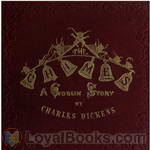 The Chimes
The Chimes
The Chimes: A Goblin Story of Some Bells that Rang an Old Year Out and a New Year In is the second of Charles Dickens' Christmas books, published in 1844. Its contemporary setting is the "Hungry Forties", a time of social and political unrest, and the book has a strong moral message. It remained popular for many years, although its fame has since been eclipsed by that of A Christmas Carol, the first of the series. Our hero Toby ("Trotty") Veck is a poor but hard-working man, whose beloved daughter Meg is due to marry on New Year's Day... | |
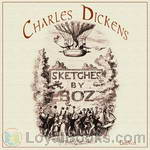 Sketches by Boz: Illustrative of Every-Day Life and Every-Day People
Sketches by Boz: Illustrative of Every-Day Life and Every-Day People
"Sketches by "Boz," Illustrative of Every-day Life and Every-day People (commonly known as Sketches by Boz) is a collection of short pieces published by Charles Dickens in 1836 accompanied by illustrations by George Cruikshank. The 56 sketches concern London scenes and people and are divided into four sections: "Our Parish", "Scenes", "Characters", and "Tales". The material in the first three of these sections is non-fiction. The last section comprises fictional stories. Originally, the sketches were published in various newspapers and periodicals from 1833-1836." | |
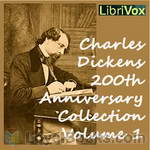 Charles Dickens 200th Anniversary Collection Vol. 1
Charles Dickens 200th Anniversary Collection Vol. 1
The Charles Dickens 200th Anniversary Collection comprises short works - fiction, essays, poetry, letters, magazine articles and speeches - and each volume will be a pot pourri of all genres and periods of his writing. This first volume is released on Dickens' 200th birthday, February 7th 2012. Further volumes will follow during the anniversary year.Volume 1 includes short stories including, amongst others, The Holly Tree, the first part of Holiday Romance and three pieces from Mugby Junction.Some... | |
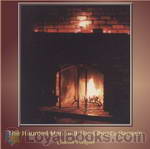 The Haunted Man and the Ghost's Bargain
The Haunted Man and the Ghost's Bargain
The Haunted Man and the Ghost’s Bargain, A Fancy for Christmas-Time, (better known as The Haunted Man and the Ghost’s Bargain) is a novella by Charles Dickens first published in 1848. It is the fifth and last of Dickens' Christmas novellas. The story is more about the spirit of the holidays than about the holidays themselves, harking back to the first of the series, A Christmas Carol. The tale centers around a Professor Redlaw and those close to him. | |
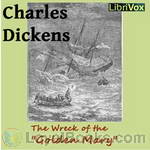 The Wreck of the Golden Mary
The Wreck of the Golden Mary
A short story of a ship wreck in 1851 trying to round Cape Horn on its way to the California gold fields. Poignant and well written. ( | |
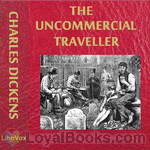 The Uncommercial Traveller
The Uncommercial Traveller
The Uncommercial Traveller is a collection of literary sketches and reminiscences written by Charles Dickens. In 1859 Dickens founded a new journal called All the Year Round and the Uncommercial Traveller articles would be among his main contributions. He seems to have chosen the title and persona of the Uncommercial Traveller as a result of a speech he gave on the 22 December 1859 to the Commercial Travellers' School London in his role as honorary chairman and treasurer. The persona sits well with a writer who liked to travel, not only as a tourist, but also to research and report what he found; visiting Europe, America and giving book readings throughout Britain... | |
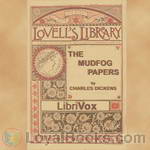 Mudfog and Other Sketches
Mudfog and Other Sketches
The Mudfog Papers was written by Victorian era novelist Charles Dickens and published from 1837–38 in the monthly literary serial Bentley's Miscellany, which he then edited. They were first published as a book as 'The Mudfog Papers and Other Sketches. The Mudfog Papers relates the proceedings of the fictional 'The Mudfog Society for the Advancement of Everything', a Pickwickian parody of the British Association for the Advancement of Science founded in York in 1831, one of the numerous Victorian learned societies dedicated to the advancement of Science... | |
 Christmas Stories From 'Household Words' And 'All The Year Round'
Christmas Stories From 'Household Words' And 'All The Year Round'
Twenty stories originally published in the Christmas editions of the magazines “Household Words” and “All The Year Round”. Some of the stories have little holiday sentiment and exhibit much of the indignation Dickens felt at the social and economic injustices of his day. Some of the stories were written in collaboration with other authors. The editor of this volume chose to omit those other chapters and include only Dickens' work. The result is that some of the stories are a bit choppy, not to say confusing. | |
 Christmas Books
Christmas Books
From 1843 to 1848, Charles Dickens wrote a series of five novellas to be published at Christmas. Most people are familiar with the first, "A Christmas Carol." The others are "The Chimes," "The Cricket on the Hearth," "The Battle of Life," and "The Haunted Man and the Ghost's Bargain." | |
 Haunted Man and the Ghost's Bargain (version 2)
Haunted Man and the Ghost's Bargain (version 2)
The last of Dickens' Christmas novellas (1848), The Haunted Man and the Ghost's Bargain centres around Professor Redlaw, a teacher of chemistry, whose personal life has been marred by sorrow and, he feels, by wrongs done to him in his past. He is haunted by his ghostly twin, who offers him the opportunity to forget completely all 'sorrow, wrong and trouble', claiming that this will make him happier. Redlaw wavers, but finally accepts this offer, discovering too late that there are conditions attached to it which cause him to infect with this unwanted 'gift' nearly everyone with whom he comes in contact... | |
 Life and Adventures of Nicholas Nickleby (Version 3)
Life and Adventures of Nicholas Nickleby (Version 3)
Nicholas Nickleby was Dickens's third novel following on from Pickwick Papers and Oliver twist. It has a cast of wonderful characters that include Wackford Squeers, the reprehensible and villainous headmaster whose reign of terror at his school in Yorkshire resulted in the abuse and deaths of many of his unwanted and orphaned children, Mr Vincent Crummles and his hilariously inept touring company, the munificent Cheeryble brothers, Ralph Nickleby, Nicholas's uncle, a mean spirited man who is driven... | |
 Christmas Carol - Condensed by the Author for his Dramatic Readings
Christmas Carol - Condensed by the Author for his Dramatic Readings
This very special abridged version was written and performed by Dickens himself during his American Tour of 1862. Without the more terrifying and dark elements of the full length novel, its hour and a half length, and its lighter, comedic style makes this a family listening experience suited for all ages. ( Michael Armenta) | |
 David Copperfield - Condensed by the Author for his Dramatic Readings in America
David Copperfield - Condensed by the Author for his Dramatic Readings in America
"This short collection of 6 selected scenes from "David Copperfield" were abridged and performed by Dickens himself during his American Tour of 1867 and 1868." | |
By: Charles E. Carryl (1841-1920) | |
|---|---|
 Davy and the Goblin
Davy and the Goblin
Eight-year-old Davy reads Lewis Carroll's novel Alice's Adventures in Wonderland and begins to get very sleepy. Suddenly a goblin appears in the fire and takes Davy on a "believing voyage" much like Alice's own adventures in Wonderland, where he meets many characters from fantasy and literature. | |
By: Charles G. D. Roberts (1860-1943) | |
|---|---|
 Hoof and Claw
Hoof and Claw
These 14 short stories about animals are superb examples of Roberts smooth storytelling style. Knows as the Father of Canadian Poetry, he loved to also write in prose about the wilderness and the personalities of the animals to be found there as well as the exciting things they are capable of. Bears, White Wolves, Lynxs, hawks and yes, cattle are just a few of the animals written about. | |
By: Charles Goddard (1879-1951) | |
|---|---|
 The Perils of Pauline
The Perils of Pauline
The Perils of Pauline is one of the first damsel in distress serials. The story is complete with undaunted hero, courageous damsel, unscrupulous villains galore, and other worldly interest. Before getting married, Pauline wants to experience the world and have adventures. When her guardian dies and leaves her an estate in trust of his secretary, adventures suddenly become more hazardous. Pauline charters aeroplanes, meets untrustworthy pirates, braves dangerous China Town, flies in a hot air balloon, adventures in the Wild West, encounters international spies, and escapes many other perils with the aid of her would-be fiancé, Harry, and an Egyptian mummy. | |
By: Charles Goddard and Paul Dicky | |
|---|---|
 The Ghost Breaker
The Ghost Breaker
The Ghost Breaker is a drama and haunted house horror complete with heroes, villains, and a Princess. The Ghost Breaker was originally a screenplay and would later be made a drama film directed by Cecil B. DeMille. | |
By: Charles Godfrey Leland (1824-1903) | |
|---|---|
 Algonquin Legends of New England or Myths and Folk Lore of the Micmac, Passamaquoddy, and Penobscot Tribes
Algonquin Legends of New England or Myths and Folk Lore of the Micmac, Passamaquoddy, and Penobscot Tribes
This work, then, contains a collection of the myths, legends, and folk-lore of the principal Wabanaki, or Northeastern Algonquin, Indians; that is to say, of the Passamaquoddies and Penobscots of Maine, and of the Micmacs of New Brunswick. All of this material was gathered directly from Indian narrators, the greater part by myself, the rest by a few friends; in fact, I can give the name of the aboriginal authority for every tale except one. | |
By: Charles H. Spurgeon (1834-1892) | |
|---|---|
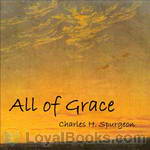 All of Grace
All of Grace
HE WHO SPOKE and wrote this message will be greatly disappointed if it does not lead many to the Lord Jesus. It is sent forth in childlike dependence upon the power of God the Holy Ghost, to use it in the conversion of millions, if so He pleases. No doubt many poor men and women will take up this little volume, and the Lord will visit them with grace. To answer this end, the very plainest language has been chosen, and many homely expressions have been used. But if those of wealth and rank should glance at this book, the Holy Ghost can impress them also; since that which can be understood by the unlettered is none the less attractive to the instructed... | |
By: Charles King | |
|---|---|
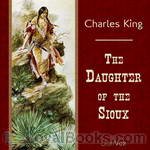 The Daughter of the Sioux,
The Daughter of the Sioux,
Charles King (1844 – 1933) was a United States soldier and a distinguished writer. He was the son of Civil War general Rufus King and great grandson of Rufus King, one of the signers of the Declaration of Independence. He graduated from West point in 1866 and served in the Army during the Indian Wars under George Crook. He was wounded in the arm forcing his retirement from the regular army. During this time he became acquainted with Buffalo Bill Cody. King would later write scripts for several of Cody’s silent films... | |
By: Charles Kingsley (1819-1875) | |
|---|---|
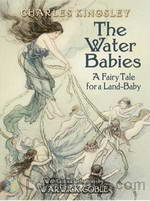 The Water-Babies
The Water-Babies
First published in 1863, The Water Babies by Rev Charles Kingsley became a Victorian children's classic along with J.M. Barrie's Peter Pan and Lewis Caroll's Alice books. It is an endearing and entertaining novel that can equally be enjoyed by adult readers as well. However, it fell out of favor in later years since it contained many ideas that are considered politically incorrect and offensive today from a humanitarian perspective. The Water Babies, A Fairy Tale for a Land Baby to give the book its complete title tells the story of Tom, a young orphan chimney-sweep in Victorian London... | |
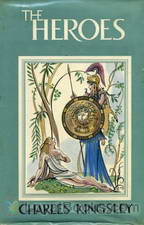 The Heroes, or Greek Fairy Tales for my Children
The Heroes, or Greek Fairy Tales for my Children
The Heroes, or Greek Fairy Tales for my Children by Charles Kingsley is a collection of three Greek mythology stories: Perseus, The Argonauts, and Theseus. The author had a great fondness for Greek fairy tales and believed the adventures of the characters would inspire children to achieve higher goals with integrity. | |
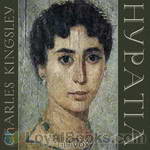 Hypatia
Hypatia
Charles Kingsley (June 12 1819 - January 23 1875) was an English divine, university professor, historian, and novelist, particularly associated with the West Country and north-east Hampshire. As a novelist, his chief power lay in his descriptive faculties, which are evident in this novel as he pictures the Egyptian desert and the ancient city Alexandria. Hypatia, 1st published in 1853, is set in 5th Century A.D. Egypt. It centers upon a young orphan monk from a desert monastery who feels called to continue his religious life in the city... | |
By: Charles Knight (1791-1873) | |
|---|---|
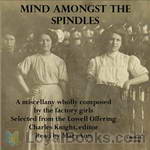 Mind Amongst the Spindles
Mind Amongst the Spindles
Lowell Massachusetts was founded in the 1820s as a planned manufacturing center for textiles and is located along the rapids of the Merrimack River, 25 miles northwest of Boston. By the 1850s Lowell had the largest industrial complex in the United States. The textile industry wove cotton produced in the South. In 1860, there were more cotton spindles in Lowell than in all eleven states combined that would form the Confederacy. Mind Amongst the Spindles is a selection of works from the Lowell Offering, a monthly periodical collecting contributed works of poetry and fiction by the female workers of the textile mills... | |
By: Charles L. Fontenay | |
|---|---|
 Rebels of the Red Planet
Rebels of the Red Planet
Dark Kensington had been dead for twenty-five years. It was a fact; everyone knew it. Then suddenly he reappeared, youthful, brilliant, ready to take over the Phoenix, the rebel group that worked to overthrow the tyranny that gripped the settlers on Mars.The Phoenix had been destroyed not once, not twice, but three times! But this time the resurrected Dark had new plans, plans which involved dangerous experiments in mutation and psionics.And now the rebels realized they were in double jeopardy.... | |
By: Charles Lamb | |
|---|---|
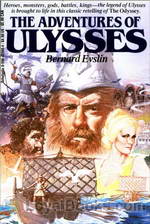 The Adventures of Ulysses
The Adventures of Ulysses
In The Adventures of Ulysses, Charles Lamb re-tells the story of Ulysses’s journey from Troy to his own kingdom of Ithaca. The book uses Homer’s The Odyssey as the basis for the story, but it isn’t a direct translation of the Greek classic. The book is considered a modern version of the epic tale when it was published in 1808. In the preface of the book, Lamb said that he made the narration of the story faster so that more readers would be attracted to it. To begin with, Homer’s Odyssey is already a classic and in re-telling this story, Charles Lamb aimed to make this epic poem more comprehensible to the average person... | |
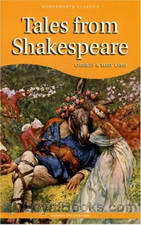 Tales from Shakespeare
Tales from Shakespeare
This little gem of a book was probably the first introduction to Shakespeare that most readers have had as children. Tales from Shakespeare was written in 1807 by a young clerk called Charles Lamb in the offices of the East India Company. Lamb co-authored them with his beloved sister Mary. The pair lived together for life, having gone through immense trauma caused by mental illness and tragedy. However, far from being a melancholy duo, they led an active and ample social life in the company of some of the literary greats of the Romantic movement of the 19th century... | |
By: Charles Mackay (1814-1889) | |
|---|---|
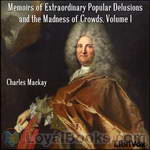 Memoirs of Extraordinary Popular Delusions and the Madness of Crowds
Memoirs of Extraordinary Popular Delusions and the Madness of Crowds
The book chronicles and vilifies its targets in three parts: “National Delusions”, “Peculiar Follies”, and “Philosophical Delusions”.The subjects of Mackay’s debunking include alchemy, beards (influence of politics and religion on), witch-hunts, crusades and duels. Present day writers on economics, such as Andrew Tobias, laud the three chapters on economic bubbles. | |
By: Charles Major (1856-1913) | |
|---|---|
 When Knighthood Was in Flower
When Knighthood Was in Flower
Set during the Tudor period of English history, When Knighthood Was in Flower tells the tribulations of Mary Tudor, a younger sister of Henry VIII of England who has fallen in love with a commoner. However, for political reasons, King Henry has arranged for her to wed King Louis XII of France and demands his sister put the House of Tudor first, threatening, "You will marry France and I will give you a wedding present – Charles Brandon's head!" | |
By: Charles McRae | |
|---|---|
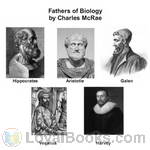 Fathers of Biology
Fathers of Biology
An account given of the lives of five great naturalists (Hippocrates, Aristotle, Galen, Vesalius and Harvey) will not be found devoid of interest. The work of each one of them marked a definite advance in the science of Biology. There is often among students of anatomy and physiology a tendency to imagine that the facts with which they are now being made familiar have all been established by recent observation and experiment. But even the slight knowledge of the history of Biology, which may be obtained from a perusal of this little book, will show that, so far from such being the case, this branch of science is of venerable antiquity... | |
By: Charles Monroe Sheldon (1857-1946) | |
|---|---|
 In His Steps
In His Steps
In His Steps takes place in the railroad town of Raymond. The main character is the Rev. Henry Maxwell, pastor of the First Church of Raymond, who challenges his congregation to not do anything for a whole year without first asking: “What Would Jesus Do?” (taken from Wikipedia) | |
 His Brother's Keeper
His Brother's Keeper
Stuart Duncan arrives home from college to find the workers in his father's mine on the brink of a strike. Leading the strike is Stuart's boyhood friend, Eric Vassal. Will they be estranged by the opposing forces? Or can they learn to work together as Stuart learns the true meaning of being His Brother's Keeper? | |
 All the World
All the World
The Great War is over and the soldier boys are back home, but some of them just can't settle down again. Neither can the girls who helped out both on the foreign and the home front. Dr. Ward notices, but doesn't know how to help until one Sunday after his sermon, when something happens to change the lives of many in their town. | |
 For Christ and the Church (dramatic reading)
For Christ and the Church (dramatic reading)
Rev. Mark Spencer is about to give up on writing his sermon one Saturday night when the Devil comes to him and tries to discourage him by reminding him how few of the people who have pledged themselves to make their motto, 'For Christ and the Church' keep it. The minister decides to preach a sermon like nothing the people in his congregation have ever heard before--a sermon that stirs them to action and to give themselves fully to God. A sermon that urges them to pledge themselves again to Christ and the Church! - Summary by Esther ben SimonidesCast ListRev... | |
 Born to Serve
Born to Serve
Despite a college education and a good family name, Barbara cannot get the teaching job she needs to help her mother and herself through some hard years. When she sees a need for a hired girl in her community, Barbara makes the unthinkable choice of lowering herself to the work of a servant. But is service really to be despised? And must all the challenges and snubs which come with the position rob her young life of its purpose, joy, and hopes and dreams? - Summary by HannahMary | |
By: Charles Morris (1833-1922) | |
|---|---|
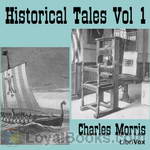 Historical Tales
Historical Tales
Volume I of a series containing anecdotes and stories, some well-known, others less so, of particular countries. This first volume comprises the discovery, colonization, founding, and early years of the United States of America, describing history for children and young adults in an exiting and novel manner. | |
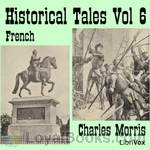 Historical Tales, Vol VI: French
Historical Tales, Vol VI: French
Volume VI of a series containing anecdotes and stories, some well-known, others less so, of particular countries. This fifth volume covers the history of France from the Hun invasion of Europe in the 5th century up to the Prussian War, describing history for children and young adults in an exciting and novel manner. (Introduction by Kalynda) | |
 Historic Tales
Historic Tales
Historical Tales, The Romance of RealityBy CHARLES MORRISPREFACE.It has become a commonplace remark that fact is often stranger than fiction. It may be said, as a variant of this, that history is often more romantic than romance. The pages of the record of man's doings are frequently illustrated by entertaining and striking incidents, relief points in the dull monotony of every-day events, stories fitted to rouse the reader from languid weariness and stir anew in his veins the pulse of interest in human life... | |
By: Charles Neville Buck (1879-1930) | |
|---|---|
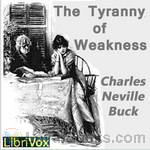 The Tyranny of Weakness
The Tyranny of Weakness
Torn between her love for her aging father, a minister steeped in the puritanical values of old New England, and the young Virginian who was born and raised of southern chivalrous tradition, the many and conflicting emotions which stir deep within Conscience Williams envelop this tale of desire, devotion, inner strength, devious treachery, and individuality of spirit. | |
By: Charles Norris Williamson (1859-1920) | |
|---|---|
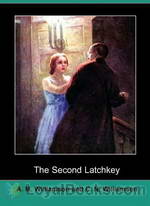 The Second Latchkey
The Second Latchkey
Jewelry thefts, society parties, clairvoyance, and romance marks this mystery, which is set in England and the US in the early 20th century. | |
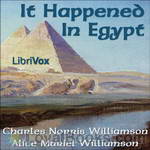 It Happened In Egypt
It Happened In Egypt
Lord Ernest Borrow and Captain Anthony Fenton think they know a secret – a secret that could make them both rich. En route, they are sidetracked by Sir Marcus Antonius Lark, a woman who thinks she’s Cleopatra reincarnate, a Gilded Rose of an American Heiress, and Mrs. Jones, a mysterious Irish woman with a past. Will they find the secret? Or will the trip up the Nile on the Enchantress Isis net them another discovery altogether? | |
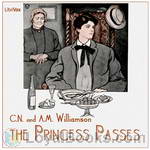 The Princess Passes
The Princess Passes
An American heiress nicknamed the Manitou Princess (after her daddy’s richest silver mine) is devastated to find that her fiancé only loves her money, so she does what anyone might do: she bolts for Europe, dons male attire and sets out on a walking tour of the Alps, passing as a teenage boy. Though professing hatred of all men, she soon falls in with a just-jilted English lord, aptly named Monty Lane, who is attempting to walk off a broken heart of his own. The Princess Passes presents the ups and downs of their alpine relationship through the unpenetrating eyes of Lord Lane... | |
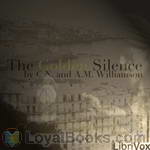 The Golden Silence
The Golden Silence
Trying to get away from an engagement he had got himself into more or less against his will, Stephen Knight travels to Algiers to visit his old friend Nevill. On the Journey there he meets the charming and beautiful Victoria. She is on her way to Algiers to search for her sister, who had disappeared years ago after marrying an Arab nobleman. With the support of his friend, Stephen Knight decides to help the girl - but when she also disappears, the adventure begins... | |
 Secret history revealed by Lady Peggy O'Malley
Secret history revealed by Lady Peggy O'Malley
"If, two years ago, when I was sixteen, I hadn’t wanted money to buy a white frock with roses on it, which I saw in Selfridge’s window, a secret crisis between the United States and Mexico would have been avoided; and the career of a splendid soldier would not have been broken.” Read here what happened to the girl, the soldier, and the white frock. - Summary by Carolin | |
By: Charles Perrault (1628-1703) | |
|---|---|
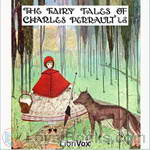 The Fairy Tales of Charles Perrault
The Fairy Tales of Charles Perrault
This book is an early collection of ten well-known fairy tales. It is thought to have begun the genre of fairy tales. | |
By: Charles W. Diffin (1884-1966) | |
|---|---|
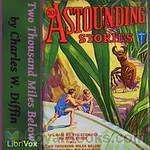 Two Thousand Miles Below
Two Thousand Miles Below
A science fiction novel that was originally produced in four parts in the publication: Astounding Stories in June, September, November 1932, January 1933. The main character is Dean Rawson, who plans on discovering a way of mining power from a dead volcano, but ends up discovering more than he bargained for. | |
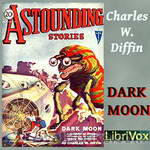 Dark Moon
Dark Moon
Mysterious, dark, out of the unknown deep comes a new satellite to lure three courageous Earthlings on to strange adventures. | |
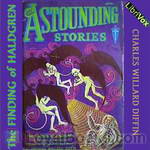 The Finding of Haldgren
The Finding of Haldgren
Chet Ballard answers the pinpoint of light that from the craggy desolation of the moon stabs out man's old call for help. | |
By: Charles Waddell Chesnutt (1858-1932) | |
|---|---|
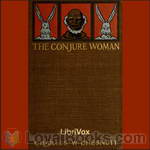 The Conjure Woman
The Conjure Woman
Published in 1899 by Houghton Mifflin, Chesnutt's first book, The Conjure Woman, was a collection of seven short stories, all set in "Patesville" (Fayetteville), North Carolina. While drawing from local color traditions and relying on dialect, Chesnutt's tales of conjuring, a form of magic rooted in African hoodoo, refused to romanticize slave life or the "Old South." Though necessarily informed by Joel Chandler Harris's popular Uncle Remus stories and Thomas Nelson Page's plantation fiction, The Conjure Woman consciously moved away from these models, instead offering an almost biting examination of pre- and post-Civil War race relations... | |
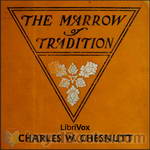 The Marrow of Tradition
The Marrow of Tradition
In The Marrow of Tradition, Charles W. Chesnutt--using the 1898 Wilmington, North Carolina massacre as a backdrop--probes and exposes the raw nerves and internal machinery of racism in the post-Reconstruction-era South; explores how miscegenation, caste, gender and the idea of white supremacy informed Jim Crow laws; and unflinchingly revisits the most brutal of terror tactics, mob lynchings. (Introduction by James K. White) | |
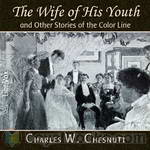 The Wife of His Youth and Other Stories of the Color Line
The Wife of His Youth and Other Stories of the Color Line
Published in 1899, The Wife of His Youth and Other Stories of the Color Line is a collection of narratives that addresses the impact of Jim Crow laws on African Americans and white Americans of the South. Many of Chesnutt's characters are of mixed-race ancestry which sets them apart for a specific yet degrading kind of treatment from blacks and whites. These stories examine particularly how life in the South was informed through a legacy of slavery and Reconstruction—how members of the “old dominion” desperately struggled to breath life into the corpse of an antebellum caste system that no longer defined the path and direction in which this country was headed... | |
 House Behind the Cedars
House Behind the Cedars
In this, Chesnutt's first novel, he tells the tragic story of love set against a backdrop of racism, miscegenation and “passing” during the period spanning the antebellum and reconstruction eras in American history. And through his use of the vernacular prevalent in the South of that time, Chesnutt lent a compassionate voice to a group that America did not want to hear. More broadly, however, Chesnutt illustrated, in this character play, the vast and perhaps insurmountable debt this country continues to pay for the sins of slavery. | |
 Colonel's Dream
Colonel's Dream
In this novel, Chesnutt described the hopelessness of Reconstruction in a post-Civil War South that was bent on reestablishing the former status quo and rebuilding itself as a region of the United States where new forms of "slavery" would replace the old. This novel illustrated how race hatred and the impotence of a reluctant Federal Government trumped the rule of law, ultimately setting the stage for the rise of institutions such as Jim Crow, lynching, chain gangs and work farms--all established with the intent of disenfranchising African Americans. | |
By: Charles Warren Adams (1833-1903) | |
|---|---|
 Notting Hill Mystery
Notting Hill Mystery
Charles Felix was the pseudonym of Charles Warren Adams, an English Lawyer and publisher and is now known to have been the author of "The Notting Hill Mystery", thought to be the first full length detective novel in English. The story first appeared as an eight part serial in a weekly magazine in 1862, and was subsequently published as a single volume novel in 1865. The story deals with the then newly emerging field of 'mesmerism' which we now know as hypnotism, and its use in the planning and execution of three truly devious crimes... | |
By: Charles Willard Diffin (1884-1966) | |
|---|---|
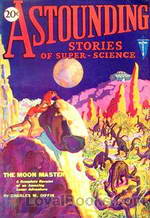 Moon Master
Moon Master
Through Infinite Deeps of Space Jerry Foster Hurtles to the Moon—Only to be Trapped by a Barbaric Race and Offered as a Living Sacrifice to Oong, their Loathsome, Hypnotic God. | |
By: Charles Willing Beale (1845-1932) | |
|---|---|
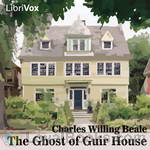 The Ghost of Guir House
The Ghost of Guir House
Do you think you understand ghosts? Now you will.Paul Henley, seemingly summoned to a mysterious rural Virginia mansion from his home in New York, finds himself as a guest at a remote, dilapidated colonial house with a host and a hostess every bit as mysterious as the house itself. Might Dorothy, his hostess, somehow be implicated in the hideous crime which he came to know took place in the hidden depths of Guir House some years ago? He hardly thought so, she seemed so innocent. And yet .... (Introduction by Roger Melin) | |
By: Charlotte Brontë (1816-1855) | |
|---|---|
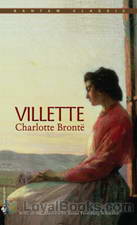 Villette
Villette
Villette was Charlotte Bronte's last published novel. It came out in 1853, just two years before her death in 1855. It is a poignant, strangely lonely and sad work, steeped in conflict between society's demands and personal desires. Set in the fictional town of Villette in France, it is the story of the young and intelligent Lucy Snowe, the narrator in the book. She is described by another character in the book as having “no beauty...no attractive accomplishments...” and strangely seems to lack a personal history or living relatives... | |
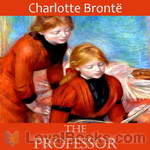 The Professor
The Professor
The book tells the story of a young man named William Crimsworth. It describes his maturation, his loves and his eventual career as a professor at an all-girls’ school. | |
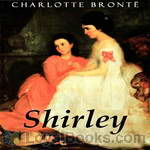 Shirley
Shirley
Shirley is an 1849 social novel by the English novelist Charlotte Brontë. It was Brontë's second published novel after Jane Eyre (originally published under Brontë's pseudonym Currer Bell). The novel is set in Yorkshire in the period 1811–1812, during the industrial depression resulting from the Napoleonic Wars and the War of 1812. The novel is set against a backdrop of the Luddite uprisings in the Yorkshire textile industry. | |
 Emma: A Fragment of a Story
Emma: A Fragment of a Story
Miss Mabel Wilcox, the owner of a newly opened girl's boarding school, meets the wealthy Mr. Conway Fitzgibbon, who drops off his frail daughter to be educated there. When background checks are made, it is discovered that no well-to-do family by the name of Fitzgibbon exists! Supposed Matilda Fitzgibbon is a pseudo-heiress - a fake! What is Miss Wilcox to do?Published posthumously and prefaced by Charlotte Brontë's editor, W. M. Thackeray, these two chapters are the only existing fragments of Emma, the novel Brontë worked on until her untimely death. Since then, it has been "completed" twice by other authors | |
By: Charlotte Dacre | |
|---|---|
 Zofloya
Zofloya
Victoria de Loredani lives the life of a fairy tale princess in Venice. She has everything one might desire and more, until the sinister Count Ardolph enters her world. The Count carries off Victoria's mother in an elopement, and sets off a series of dramatic events that begin to unhinge Victoria's life entirely. Passion, brutality, and murder begin to dominate the separated worlds of Victoria and her brother Leonardo. - Summary by Carolin | |
By: Charlotte Grace O'Brien (1845-1909) | |
|---|---|
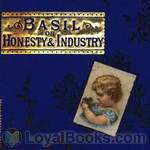 Basil, or, Honesty and Industry
Basil, or, Honesty and Industry
A poor boy discovers the value of honesty and industry. More than that, he discovers the value of his relationship with God. (Introduction by Robert Harder) | |
By: Charlotte Lennox (1730-1804) | |
|---|---|
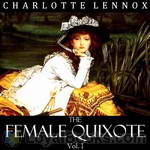 The Female Quixote
The Female Quixote
The novel formally inverts Don Quixote: as the don mistakes himself for the knightly hero of a Romance, so Arabella mistakes herself for the maiden love of a Romance. While the don thinks it his duty to praise the platonically pure damsels he meets (such as the woman he loves), so Arabella believes it is in her power to kill with a look and it is the duty of her lovers to suffer ordeals on her behalf. | |
By: Charlotte M. Yonge (1823-1901) | |
|---|---|
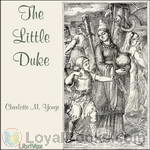 The Little Duke
The Little Duke
The Little Duke by Charlotte M. Yonge is historical fiction based on the the life of Richard, Duke of Normandy. He assumes the title of Duke at only 8 years of age, after his father is murdered. The story first appeared in her magazine, The Monthly Packet, as a serial. | |
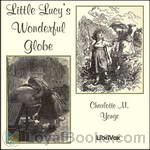 Little Lucy's Wonderful Globe
Little Lucy's Wonderful Globe
Travel with Little Lucy around the globe and learn a little geography and small bits about other cultures. | |
By: Charlotte Maria Tucker (1821-1893) | |
|---|---|
 Ned Franks, or The Christian's Panoply
Ned Franks, or The Christian's Panoply
Ned Franks, a one-armed Christian sailor, returns to his sister's home after several years away at sea. She and her son are not Christians, and are cold toward him, viewing him as a hindrance and expense. By his upright, kind behavior and willingness to work, he soon begins supporting himself and becomes well-liked in the community, especially by the children. Various other characters face and overcome challenges, including a servant girl who breaks a habit of dishonesty and a Jew who is faced with the reality that Jesus Christ is the Messiah... | |
By: Charlotte Mary Yonge (1823-1901) | |
|---|---|
 Heir of Redclyffe
Heir of Redclyffe
The Heir of Redclyffe (1853) was the first of Charlotte M. Yonge's bestselling romantic novels. Its religious tone derives from the High Church background of her family and from her friendship with a leading figure in the Oxford Movement, John Keble, who closely supervised the writing of the book. The germ of its plot was suggested by her friend Marianne Dyson. | |
By: Charlotte Perkins Gilman (1860-1935) | |
|---|---|
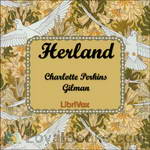 Herland
Herland
Herland is a utopian novel from 1915, written by feminist Charlotte Perkins Gilman. The book describes an isolated society comprised entirely of Aryan women who reproduce via parthenogenesis (asexual reproduction). The result is an ideal social order, free of war, conflict and domination. It first appeared as a serial in Perkin’s monthly magazine Forerunner. | |
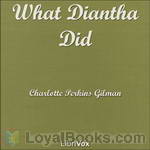 What Diantha Did
What Diantha Did
Charlotte Perkins Gilman opens a window of history through which we see a small part of the determined efforts made by women to elevate the circumstances of women in the early 20th century.Diantha Bell is a normal young woman desiring marriage and a home, but also she desires a challenging career in new territory that raises many eyebrows and sets malicious tongues wagging. Her effort to elevate housework and cooking to a regulated and even a scientific business, for the relief of homemakers, is a depiction of the late 19th century movement to promote Domestic Science, or Home Economics, as a means of providing more healthful home life, as well as career paths for women... | |
 With Her in Ourland
With Her in Ourland
Third in the trilogy of the feminist classics, after Moving the Mountain and Herland. It was published serially in Perkins Gilman's periodical The Forerunner. In Herland, three American young men discover a country inhabited solely by women, who were parthenogenetic , and had borne only girl children for two thousand years; they marry three of the women. Two of the men and one woman leave the country of Herland to return to America; Jeff Margrave remaining in Herland with his wife, Celis, a willing citizen; Terry O... | |
By: Charlotte Turner Smith (1749-1806) | |
|---|---|
 The Old Manor House
The Old Manor House
The proud, cruel and arrogant Mrs. Rayland never married. Therefore, "Rayland Hall", the old Manor House of the title, had to pass to their heir, Somerive, whom they never treated kindly. According to the British laws at the time, the heir must be the oldest son. But what is to be done when the second son is more worthy of it - and is more beloved by Miss Rayland herself? And must the fact that he is in love with a servant and dependent of Miss Rayland take its toll? | |
 Celestina
Celestina
Celestina was adopted by Mrs. Willoughby from a convent in France. No one knows who her parents are. Her secret birth causes problems for her in the marriage market. But this novel is not only a courtship novel. It is about creating and keeping friendships, finding the meaning of family, the difference between love and obsession, and the development of Celestina from a dependent child to a strong woman of virtue. - Summary by Stav Nisser. | |
By: Chester K. Steele | |
|---|---|
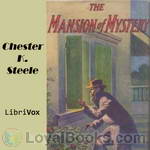 The Mansion of Mystery
The Mansion of Mystery
Mr. and Mrs. Langmore were found mysteriously murdered in their mansion one morning. Their daughter Margaret, who was at home at the time of the deaths, is quickly suspected of having committed the crime. However, her fiance Raymond Case will not believe in her guilt and convinces the famous detective Adam Adams to investigate.This book was written by Edward Stratemeyer, head of the Stratemeyer Syndicate, under the pseudonym of Chester K. Steele. | |
 The Diamond Cross Mystery
The Diamond Cross Mystery
Colonel Ashley is confronted with a difficult case: The proprietor of a jewelry shop is found murdered, and a valuable diamond cross is stolen. Whodunnit, and how can the Colonel's expertise in fishing help to solve the case? | |
By: Chesterton, G. K. | |
|---|---|
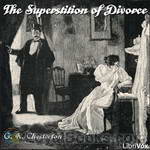 The Superstition of Divorce
The Superstition of Divorce
This short book was written in 1920, and in it Chesterton, with his usual wit and incisive logic, presents a series of articles defending marriage and indicating the weaknesses in divorce. He did this 16 year before the first Christian denomination in the world allowed it’s members to divorce. Till then Christendom was unanimous in standing against it. Chesterton saw clearly the trends of this time, and delivered this defense. | |
By: Chretien de Troyes | |
|---|---|
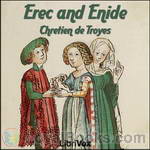 Erec and Enide
Erec and Enide
A medieval romance in which Erec goes through many trials until he is sure of Enide’s loyalty and true love | |
By: Christina Rossetti (1830-1894) | |
|---|---|
 Maude
Maude
Maude is a novella by Christina Rossetti, written in 1850 but published posthumously in 1897. Considered by scholars to be semi-autobiographical, the protagonist is 15-year-old Maude Foster, a quiet and serious girl who writes poetry that explores the tensions between religious devotion and worldly desires. The text includes several of Rossetti's early verses, which were later published as part of her collections of poetry. | |
By: Christoph von Schmid (1768-1854) | |
|---|---|
 Basket of Flowers, The
Basket of Flowers, The
James is the king's gardener and he deeply enjoys caring for and cultivating flowers. He teaches his daughter Mary many principles of godliness through the flowers. One day Mary is falsely accused of stealing, and the penalty is death. Through many trials and hardships, Mary learns of the goodness of God, the blessing of praying for her enemies, how to consider her trials as a joy, and true forgiveness. | |
By: Christopher Marlowe (1564-1593) | |
|---|---|
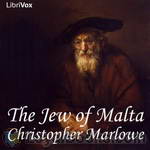 The Jew of Malta
The Jew of Malta
Christopher “Kit” Marlowe (baptised 26 February 1564 – 30 May 1593) was an English dramatist, poet, and translator of the Elizabethan era. The foremost Elizabethan tragedian before William Shakespeare, he is known for his magnificent blank verse, his overreaching protagonists, and his own untimely death. The Jew of Malta (1589) is an original story of religious conflict, intrigue, and revenge, set against a backdrop of the struggle for supremacy between Spain and the Ottoman Empire in the Mediterranean... | |
By: Christopher Morley (1890-1957) | |
|---|---|
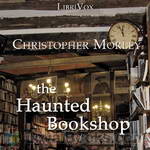 The Haunted Bookshop
The Haunted Bookshop
Roger Mifflin is the somewhat eccentric proprietor of The Haunted Bookshop, a second-hand bookstore in Brooklyn that is “haunted by the ghosts of all great literature.” Beginning with the arrival of a young advertising man and the mysterious disappearance of a certain volume from the shelves of the bookshop, a lively and often humorous tale of intrigue unfolds, generously sprinkled with liberal doses of Roger’s unique philosophy on literature and book selling. | |
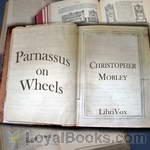 Parnassus on Wheels
Parnassus on Wheels
Parnassus on Wheels is about a fictional traveling book-selling business. The original owner of the business, Roger Mifflin, sells it to 39-year-old Helen McGill, who is tired of taking care of her ailing older brother, Andrew. | |
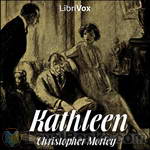 Kathleen
Kathleen
A group called the Scorpions, eight Oxford undergraduates, find a letter Kathleen wrote a letter to Joe at Oxford. They build up an image of Kathleen and Joe from the letter and set out to find and meet Kathleen. The competition between them leads to many entertainingly funny scenarios. | |
 Mince Pie
Mince Pie
Mince Pie is a compilation of humorous sketches, poetry, and essays written by Christopher Morley. Morley sets the tone in the preface: "If one asks what excuse there can be for prolonging the existence of these trifles, my answer is that there is no excuse. But a copy on the bedside shelf may possibly pave the way to easy slumber. Only a mind "debauched by learning" (in Doctor Johnson's phrase) will scrutinize them too anxiously." | |
 In the Sweet Dry and Dry
In the Sweet Dry and Dry
Written just before Prohibition to entail the possible troubles that might happen en route. Both sides of the argument, or battle as the case may be, strike out with various over-top methods like legislating most fruits and vegetables as unsafe or intoxicating large groups with breathable alcohol. | |
By: Cicely Hamilton (1872-1952) | |
|---|---|
 William, An Englishman
William, An Englishman
William – an Englishman is a 1919 novel by Cicely Hamilton. The novel explores the effect of the First World War on a married couple during the rise of Socialism and the Suffragette movement. It was originally published by Skeffington & Son before being reprinted by Persephone Books in 1999. Described as 'a passionate assertion of the futility of war' by The Spectator, William - an Englishman won the first Prix Femina-Vie Heureuse Anglais prize in 1920. | |